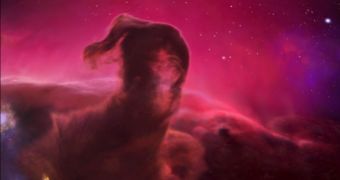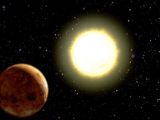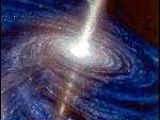This is a review of the top ten strangest things in space that scientists still study and try to formulate, theories that open our imagination to new horizons and new technological possibilities.
1. Antimatter - all the things we know and see are made out of matter and energy. For a long time it was thought that atoms were the smallest particle that formed matter. Until the discovery of the elementary particles. Elementary particles that form the known matter are called fermions, such as the electron, proton and the neutron. The scientists found something even more shocking, protons and neutrons were not true elementary particles, but a combination of three particles called quarks. Every elementary particle found so far has a counter particle. For example: the electron is an elementary particle and it has a counter part named the positron of equal mass and quantum momentum, but with positive charge. When an electron and a positron collide they annihilate each other and convert into pure energy. It was once thought that the Universe is composed of equal amounts of matter and antimatter, however if that was true we could not make the difference anyway, since photons that compose light coming from distant galaxies are their own counter particles.
2. Mini-Black Holes - we all know what a black hole is. An object with extreme gravitational pull that has a core named a singularity of zero volume and infinite density surrounded by an event horizon. The event horizon represents the line beyond which light or matter cannot escape the black holes pull. Mini-Black Holes are thought to exist by thousands in the universe, each as small as an atom's nucleus. Mini-Black Holes can be created in particle accelerators, but they evaporate through Hawking radiation before they can accrete matter. Skeptics say that Mini-Black Holes created in particle accelerators can accrete matter and will potentially create a black hole that will destroy Earth and the solar system.
3.The Cosmic Microwave Background or CMB - is a remnant of the primordial hot state of the Universe after the Big Bang. It was discovered totally by mistake during a communication experiment. The image provided by the CMB confirmed the theory that the Universe might have been created as a result of the expansion of a previous hotter denser state.
4.Dark Matter - it has been suggested that dark matter is one of the forms of existence of matter. Dark Matter was predicted as a result of observations on the visible Universe. Studies show that all the visible matter in the Universe is not enough to explain for the current configuration of the galaxies and the whole Universe. There is simply not enough matter to produce enough gravitational pull to keep the galaxies from falling apart, so it was predicted that some other kind of matter exists, but it cannot be yet observed.
5.Exoplanets - Until the 1990, the only known planets in the Universe were the eight planets that form our solar system. Since then scientists have found more than 190 extrasolar planets, from massive gas giants to rocky ones orbiting din red dwarfs. The improvements in technology will probably reveal even more planets, some might be similar to your own. The record for the star with the most planets is currently held by 55 Cancri A, with a total of 5 gas giants.
6.Gravity - the force that might hold the key to the true understanding of the nature of our Universe and its final destiny. Gravity is exerted by matter as a force of attraction toward other matter to create bigger structures. Gravity creates distortions in the fabric of space-time. But though it was the first force to be fully understood, its nature and why it is so weak compared to the other forces we might never know. So string theory variations say the gravitational force is so weak in our Universe because it's leaking from a parallel universe where gravity is much stronger.
7.Galactic collisions - like life on Earth, galaxies 'eat' each other to survive and to further evolve. Our neighboring galaxy, Andromeda, is a classic example of such cannibalism, with more than a dozen of star clusters scattered through the entire galaxy, remnants of past meals. Andromeda and our galaxy will collide probably 3 billion years into the future to form a new galaxy.
8.Neutrinos - are incredibly small electrically neutral particles, with a very small mass. Several billions of neutrinos pass through your body every second. Practically, this particle can travel through compact bodies for thousands of kilometers without stopping. It is thought that discovering the true mass of the neutrino can unlock the secrets regarding the extra gravitational pull that we are seeing in the galaxies and might hold the key to the true ultimate fate of the Universe.
9.Quasars - are a class of black holes, with large accretion disks that emit extreme amounts of light in most of the visible domain, infrared and ultraviolet. These violent objects can release energy several hundred times more than a whole galaxy. They are usually placed in the center of the galaxies, where matter is denser and the supermassive black hole can 'feed'.
10.Vacuum Energy - is an underlying background energy that exists in space when devoid of matter. Quantum physics tells us that despite appearances, empty space is a bubbling brew of subatomic particles constantly popping in and out of existence and fill the space with certain energy that according to general relativity produces the anti-gravitational force that pushes the matter apart and causing the universe to accelerate the expansion rate.

 14 DAY TRIAL //
14 DAY TRIAL // 

